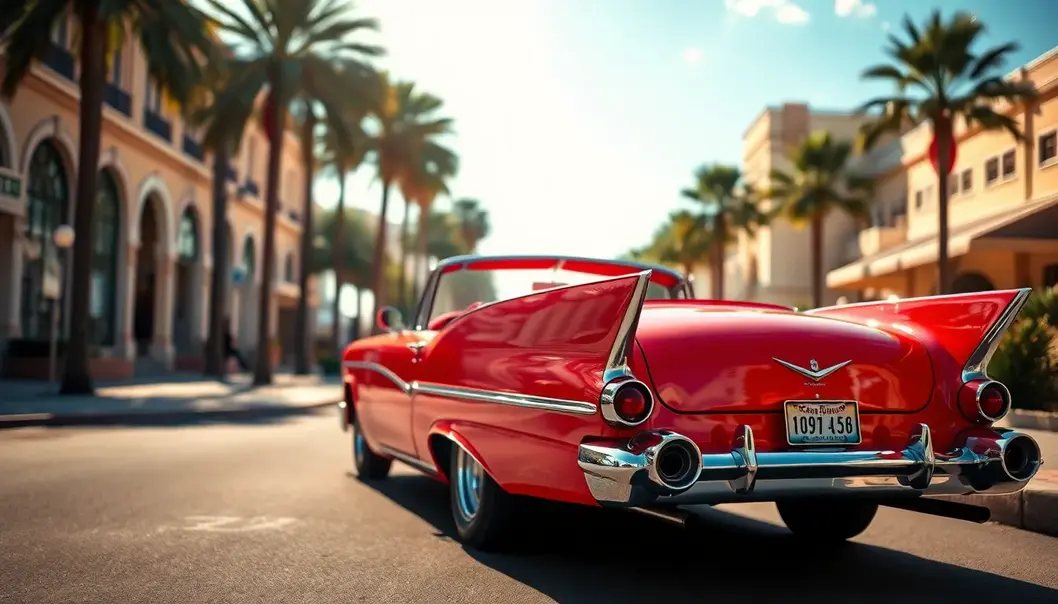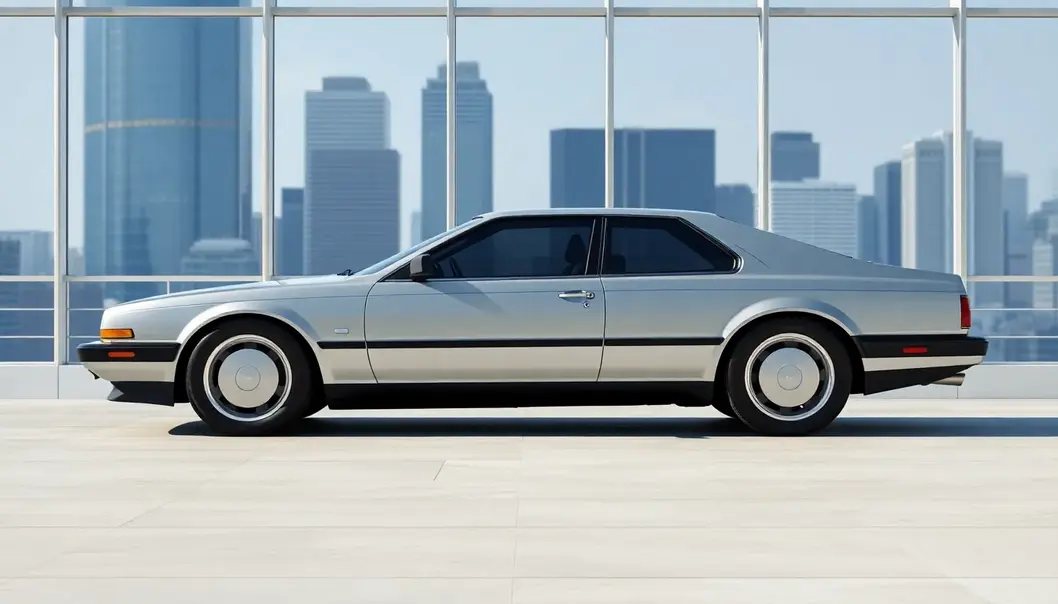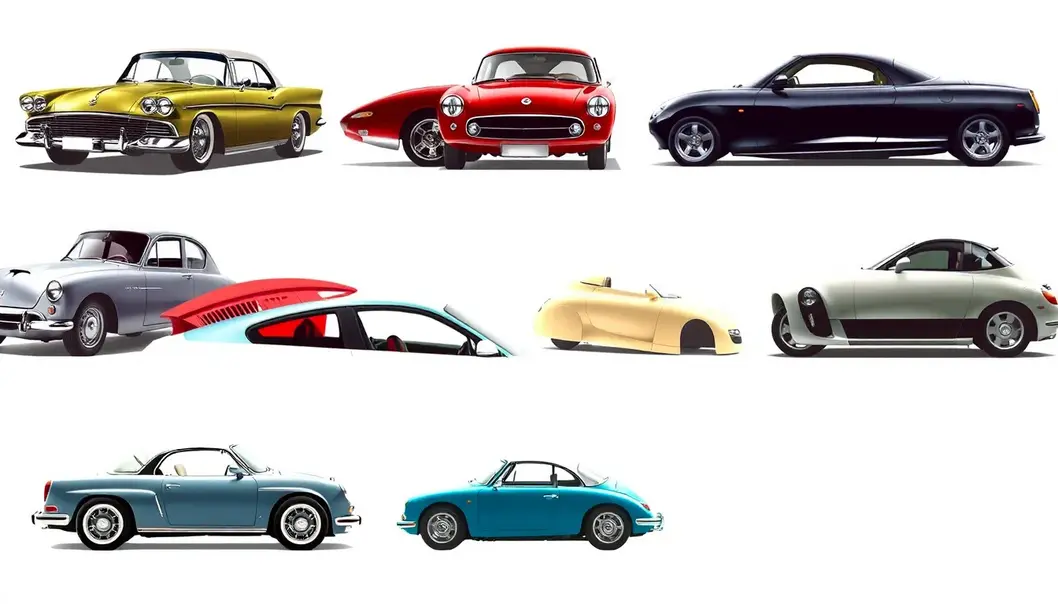From sleek curves to bold statements, the journey of car design is as fashionable as a Chanel runway. Each era, a canvas for innovation, unveils its unique aesthetic, influencing the way we perceive elegance and sophistication. As we delve into this fascinating evolution, fashion lovers will find parallels between haute couture trends and automotive artistry. Whether it’s the flowing lines of the ‘50s or the minimalist chic of the ‘90s, car design has rhythmically danced to the tune of fashion’s changing symphony. Prepare to be whisked away into a world where style, substance, and creativity merge on four wheels, revealing the captivating allure of automotive fashion.
Seductive Silhouettes: 1950s to 1970s

The post-war era from the 1950s to the 1970s was a golden age for automotive design. Cars became symbols of prosperity and an embodiment of stylish indulgence. With the economy booming, the road was a stage where elegant, curvaceous models took the spotlight, competing for attention with the fashion industry’s alluring creations.
This period saw the rise of automobiles that mirrored the lavish allure of haute couture, much like the revolutionary transformations brought by Dior’s New Look. Exaggerated curves and lavish chrome detailing on automobiles paralleled the era’s penchant for opulent fabrics and cinched waistlines. Every inch of metal spoke of sophistication—a finely sculpted front grille here, a glimmering swathe of chrome there, all evocative of a time enamored with flair.
The innovation of tailfins defined this period. Originally inspired by aviation, these angular projections bestowed cars with a sense of movement and speed even at a standstill. Much like how fashion magnates harnessed the allure of hourglass silhouettes and structured elegance, designers of the time injected automobiles with high style and grit. Tailfins grew taller and more audacious, marking an era where cars were not just transport but statements of personal identity and success.
Panoramic windshields further accentuated this dynamic charisma. They represented an automotive industry yearning for modernity and the future. This was a time when car designs flirted with the boundaries between art and engineering, aspiring to the same ubiquity that fashion houses achieved with their luxurious evening gowns and tailored suits. Cars of this era ventured beyond functionality; they became canvases for flamboyant expression akin to wearing one’s confidence.
As vehicles evolved in style, automotive interiors also began to rival the upmarket allure of fashion houses. Luxurious materials and attention to detail within whether plush leather or sophisticated instrumentation, mirrored the plush fabrics and impeccable workmanship found in the latest fashion collections. This interior opulence complemented the external grandeur perfectly, weaving an extravagant tale of wealth similar to that spun by high-fashion boutiques.
In essence, the car models crafted during this illustrious period were not merely products of engineering prowess but creations that straddled the divide between mechanical innovation and artistic bravery. Much like the avant-garde strides in fashion, the automotive industry during the 1950s to 1970s era sewed elegance into the very fabric of daily life, leaving an indelible mark on both roadways and runways.
Minimalist Marvels: 1980s to 2000s

As the automotive industry transitioned from the flamboyant designs of previous decades, the 1980s to 2000s emerged as an era of minimalist innovation. The angular geometry of the past gave way to softer, more aerodynamic forms, marking a significant shift towards understated elegance. Car designers were inspired by technological advancements, which allowed for smoother lines and lighter materials, reflecting in vehicles that felt faster, even when standing still.
This transition mirrored a broader cultural movement towards minimalism, seen vividly in the fashion industry. As consumers sought simplicity, fashion designers responded with clean lines and a muted palette. This aesthetic sensibility found a parallel in car design. The sharp, defined edges of past models were smoothed into sleek silhouettes, emphasizing function over ornamentation.
Within this context, a car’s shape became a statement of purpose. The drive towards fuel efficiency and aerodynamic performance resulted in teardrop-like shapes that reduced drag and enhanced energy use. These advancements were tightly interwoven with a growing emphasis on environmental consciousness and technological sophistication, broadcasting both efficiency and style.
Muted colors dominated the era’s palette, with silvers, pastels, and earthy tones replacing the vibrant hues of previous decades. This shift allowed the design itself to be the focus, further emphasizing the dramatic change in aesthetic values. The integration of functionality and form created an allure that resonated with a fashion-forward audience that craved subtle sophistication over flamboyant display.
Minimalism also found its place in vehicle interiors, where clean, uncluttered spaces became desirable. Inspired by Scandinavian furniture and home design, car manufacturers simplified dashboards and used high-quality materials, offering users an experience closer to a minimalist boutique than a typical vehicle. This convergence of automotive and domestic chic redefined what it meant to be a trendsetter, inviting a new wave of connoisseurs who appreciated the finer details of form and function.
In this light, the vehicles of the 1980s to 2000s served as the perfect canvas for a restrained yet revolutionary style narrative. Elegance was no longer about ostentation; it was about the subtle interplay of technology and artistry, creating a harmonious ensemble that epitomized the decade’s minimalist marvels.
Final words
From voluminous curves to barely-there minimalism, the evolution of car design parallels the progression seen in fashion runways. This shining tapestry of automotive history reveals a deep connection to the zeitgeist of each decade, providing a window into the cultural mores that shaped both our roads and wardrobes. As the lines between fashion and automotive design continue to blur, the future promises even more synergies, captivating style aficionados with each innovative twist and unexpected turn.
Experience the intersection of fashion and automotive design first-hand. Discover your perfect style at Drive-Exquisite.
Learn more: https://drive-exquisite.com/styles
About us
Drive-Exquisite offers a curated collection of luxury vehicles that embody the elegance and innovation found in high fashion. Our showroom is a destination for those who appreciate the artistry of automotive design and wish to own a piece of stylistic heritage.

